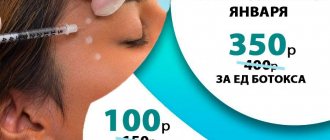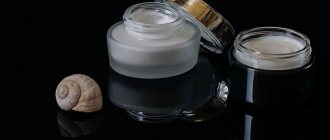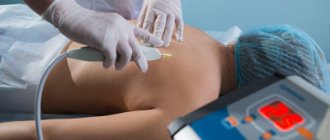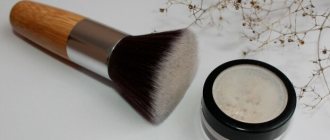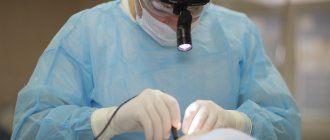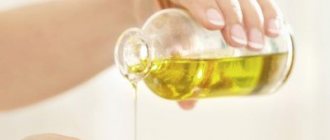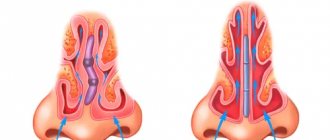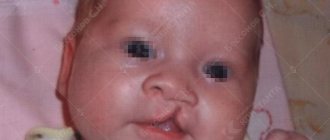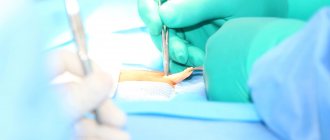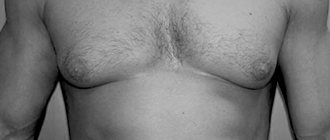Botulinum therapy in cosmetology and medicine is actively developing. The method is highly effective and has minimal side effects. In cosmetology it is used for:
- smoothing facial wrinkles;
- preventing the formation of facial wrinkles, including age wrinkles;
- correction of the shape of individual parts of the body (for example, the face);
- healing wounds and reducing the likelihood of scar formation in areas of increased muscle activity;
- reducing sweating.
Botulinum therapy - what is it?
Botulinum therapy in cosmetology and medicine is actively developing. The method is highly effective and has minimal side effects. Botulinum toxin was discovered back in the 19th century and is the cause of death in patients with botulism. In large doses, this substance has been found to cause vomiting, difficulty swallowing, convulsions, paralysis and can be fatal. But in the 70s of the last century, Alan Scott conducted animal studies proving that botulinum toxin can be used for medicinal purposes in small doses. The scientist proposed using this substance to treat strabismus. This aroused interest in the new technique, which is why new studies and articles on botulinum therapy appeared.
Cost of botulinum therapy procedure
The cost of botulinum therapy in Moscow is influenced by factors such as the dose of botulinum toxin, the total area of the correction zone, and the manufacturer of the drug. At the International Hemostasis Clinic, the price for botulinum therapy using modern drugs ranges from 250 to 350 rubles. Before prescribing the procedure, our cosmetologists will conduct a thorough diagnosis, excluding any contraindications, select an effective drug, and provide regular monitoring after injections. To clarify prices and make an appointment with a cosmetologist, request a call back or call the phone number listed on the website. Our consultants will contact you and be happy to answer all your questions.
You can make an appointment with a cosmetologist, find out the cost of botulinum therapy (Botox) and ask any questions you may have by phone or through the feedback forms on the website.
Biorevitalization
Treatment of hyperhidrosis
Mesotherapy
Botulinum toxin and its properties
This is a protein substance, which is considered one of the most powerful poisons of natural origin. But scientists have found that in small doses it is safe for the body and allows you to relieve muscle spasms. Initially, botulinum therapy was used to treat neurological diseases, but one interesting side effect was noticed after the injections: facial wrinkles were smoothed out on the patients’ faces. This was especially noticeable in the folds between the eyebrows and in the corners of the mouth.
This aroused interest among wealthy middle-aged and older women who were ready to do anything for beauty and youth, so there was a high demand for an anti-aging procedure. The effect of botulinum therapy was amazing, so the innovative rejuvenation procedure began to be widely used in cosmetology.
The very first and most famous botulinum therapy drug based on botulinum toxin A (BTA) is Botox.
. For a long time it was the only one, but now there are drugs that include botulinum toxin type B (BTV). Other types of this toxin are not used for botulinum therapy.
To treat diseases associated with muscle spasms, botulinum therapy has been officially used since 1989. The use of Botox in cosmetology was approved in 2002. Since then, cosmetologists have achieved excellent results in the field of rejuvenation. After botulinum therapy, most small facial wrinkles disappear, the face acquires a more welcoming expression due to the smoothing of the folds between the eyebrows.
The effect of botulinum toxin during botulinum therapy
Botulinum toxin is an A-type neurotoxin that disrupts the transmission of nerve impulses from nerve endings to muscles. The essence of botulinum therapy is the injection of botulinum toxin type A into soft tissues. Once penetrated, the substance blocks the transmission of nerve impulses to the muscles, causing temporary paralysis and relaxation. Since the blocked muscles stop contracting and take an active part in facial expressions, the skin in this area gradually smoothes out, as a result of which wrinkles, deep folds, and creases disappear.
Mechanism of action
Botulinum toxin is a neurotoxin. It blocks the release of acetylcholine, which is involved in the transmission of nerve impulses at neuromuscular synapses. Thus, if the nervous system sends a signal to the muscles, it does not reach the point of application. Consequently, the muscle remains in a relaxed state. Local administration of the substance in small concentrations allows for relaxation of certain muscles. That is why botulinum therapy for spasticity can achieve a positive result.
The direct effect of botulinum toxin is to influence motor and parasympathetic nerve fibers. Acetylcholine is blocked and does not leave the presynaptic part of the neuron, so the transmission of nerve impulses becomes impossible. The introduction of Botox and other drugs into the muscle leads to a decrease in the cross-section of muscle fibers and the number of myofilaments. Thus, the volume and strength of the muscle decreases. This process is reversible.
BEFORE
AFTER
The indirect effect of the substance is also described. At the level of the central nervous system, botulinum toxin leads to inhibition of alpha motor neurons and normalizes reciprocal inhibition between antagonist muscles (flexors and extensors). This makes it possible to combat such phenomena as skeletal muscle dystonia.
The analgesic effect of drugs for botulinum therapy was also revealed. This property was discovered by accident when using the toxin for anti-aging purposes. Doctors noticed that botulinum therapy for migraines reduces the intensity of pain, so they began to actively study this property. To date, it has been proven that BTA has an analgesic effect for dystonia, spasticity, tension headaches, trismus, migraines, and chronic pelvic pain. This is explained by several theories. The first is decompression of pain receptors due to the elimination of muscle spasm. The second is the normalization of muscle spindle contraction. The third theory is a reduction in neurogenic inflammation.
Headache treatment
Separately, it is worth noting the use of botulinum toxin for the treatment of headaches. Scientists have found that Botox can help relieve chronic headaches caused by migraines. According to statistics, they bother every fifth adult.
Botox is administered to all areas from which sensory impulses go to the central nervous system. Thanks to this, it is possible to achieve complete muscle relaxation. After a few hours, the drug penetrates the sensory nerves and blocks the transmission of pain impulses from them.
With the help of a pronounced relaxing effect on the muscles of the head and neck, it is possible to restore the quality of life of patients. Botulinum therapy allows you to forget about regular headaches.
Botulinum therapy: pros and cons
Let's talk about the pros and cons of botulinum therapy in cosmetology and medicine. This question worries many who want to use the technique. On the one hand, there is extensive experience in the successful use of drugs based on BTA and BTV, but on the other hand, this is a strong poison.
The benefits of botulinum therapy include:
- high efficiency
- quick result
- minimal trauma to the skin
- safety of registered drugs
- duration of effect
- painlessness
- minimum list of contraindications
The content of botulinum toxin in drugs used in botulinum therapy is minimal. The dangerous dose of the toxin is tens or hundreds of times greater than the amount injected during the session, so the injections are completely safe for the body. If you go to a licensed clinic for botulinum therapy and use only registered drugs, you should not be afraid of complications and the development of life-threatening conditions. The result of botulinum therapy will please you, and the general condition of the body will not worsen.
The main disadvantages of botulinum therapy:
- The effect lasts 6-8 months. After this period ends, the procedure must be repeated.
- Only a qualified doctor can perform botulinum therapy correctly. Any mistake can lead to facial asymmetry.
- After injections, swelling may persist for the first days. It is especially noticeable on the eyelids. Swelling after botulinum therapy goes away on its own.
- Facial muscles located next to muscles immobilized by botulinum toxin may become excessively mobile. This leads to the appearance of new facial wrinkles.
- duration of effect
- If injections are abused for rejuvenation, the face can become unnatural and devoid of facial expressions. In everything you need to maintain moderation, because a motionless face without emotions can hardly be called beautiful and natural.
Is botulinum therapy harmful?
If you entrust it to a professional and observe the measure, then no. Some patients, in pursuit of youth, become dependent on beauty injections, try stubbornly to overcome even minor wrinkles, and as a result get a face that resembles a mask. Fortunately, this is reversible.
A wrinkled forehead not only directly reveals a person’s age, but also significantly disrupts the aesthetics of the face. What anatomical nuances should a doctor take into account when using botulinum therapy in the upper third of the face?
The condition of the upper third of the face (upper craniofacial, or orbital-frontal-superciliary region) is the most important indicator in determining age-related changes in the face and in its aesthetic assessment.
Anatomically, the aesthetics of the forehead is determined by its shape and height, the volume of the eyebrows, the shape and position of the eyebrows, the severity of these parameters and their correspondence to gender characteristics. The shape of the forehead is determined by the structure of the frontal bone, the convexity and severity of the frontal tubercles and eyebrows, and the presence of the frontal cavity. The height of the forehead is considered ideal if, in relation to the height of the face, it satisfies the proportions of the golden ratio, which is 1.618.
The shape and position of the eyebrows have gender differences: in men, the eyebrows are located horizontally at the level of the bony orbital margin; female ones are arched with a maximum rise of the eyebrow at the border between its medial and lateral parts - at a point located at a distance of 2/3 of the total length of the eyebrow (counting from the bridge of the nose). In this case, the head and tail of the eyebrow remain, as a rule, at the level of the supraorbital bone edge.
Age-related disorders in the frontal zone are expressed primarily in the formation of wrinkles, loss and redistribution of adipose tissue, resorption of bone structures, and changes in the functional activity of muscles. Thus, aging affects all tissues.
As a rule, in the upper third of the face a combined or extended aesthetic correction is required in accordance with the individual age-related changes in this area in a particular patient. The most popular combination of injection techniques is contouring and volumetric modeling with hyaluronic acid (HA) preparations and botulinum therapy.
It is important that such a comprehensive correction program allows you to create a harmonious gender shape of the frontal zone.
In this article we will focus on the features of the use of botulinum therapy (onаbotulinum toxin A - the drug "Botox"). In the frontal region, this method achieves the following three goals:
- eliminating or minimizing facial wrinkles of the forehead (using intramuscular balance techniques);
- functional eyebrow lifting, including extended correction of the frontalis muscle, the muscles of the interglabellar muscle and the orbicularis oculi muscle (intermuscular balance technique);
- improving facial perception (harmonizing techniques) (E. Razumovskaya, E. Parsagashvili, 2014).
The key to the successful use of botulinum toxin is knowledge of the topographic anatomy of the frontal muscle and assessment of its functional activity (C. Le Louarne, P. Trevedick).
Features of botulinum toxin administration depending on the topographic anatomy of the frontal muscle
The frontal muscle (m. frontalis) is a thin muscle that covers a large part of the forehead (photos 1–3). It is divided into two symmetrical portions by a triangular-shaped aponeurosis with the base directed upward. Each of these portions is a quadrangular muscle that adheres tightly to the superficial fascia without attachment to bone. The belly of the frontalis muscle has an aponeurotic attachment in the upper part with the supracranial aponeurosis (galea aponeurotica). In the lower part, at the level of the inner two-thirds of the upper edge of the eyebrow, the fibers of the frontal muscle are intertwined with the fibers of the circular muscle of the eye (m. orbicularis oculi) (laterally, medially) and with the fibers of the muscles of the interbrow: the corrugator muscle, the proud muscle and the muscle that lowers the eyebrow ( m. corrugator supercilii, m. procerus, m. depressor supercilii).
The frontalis muscle lies in the same plane, so botulinum toxin injections are carried out to the same depth, which is determined by palpation of the forehead tissue. There is no tight contact between the frontal muscle and the frontal bone; this determines the mobility of the musculocutaneous flap relative to the bone. That is why the drug must be administered without touching the periosteum and avoiding getting it between the frontal muscle and the periosteum - thereby preventing its uncontrolled spread in free space. Technical nuances should be observed when injecting into the forehead area: the needle is inserted at an angle of 450, to the same depth - 1-3 mm; the doses of Botox for each selected point are equal and amount to 1.25-4 units (photo 1). The total dose is determined depending on the size of the muscle and its functional activity and is 8-20 units, according to the instructions for medical use of the drug.
Photo 1. Injection techniques into m. frontalis: the needle is inserted at an angle of 45°.
Features of botulinum toxin administration depending on the functional anatomy of the frontal muscle
The main vector of contraction of the frontalis muscle is directed upward (photo 2), since its main function is to raise the eyebrows.
Photo 2. Direction of contraction vectors m. frontalis.
However, the contraction of the upper functional part of the frontalis muscle comes from the hairline, and the muscle may have a depressive vector of contraction. Therefore, injections of botulinum toxin into the upper part of the frontalis muscle are effective - they help lift both the eyebrows and the hairline. We recommend injecting 2-4 units of Botox into each point.
Injections of botulinum toxin into the lower half of the functional part of the frontalis muscle not only smooth out forehead wrinkles, but also promote lowering of the eyebrows. Here, in our opinion, a dose of 1-2 units of Botox per point is required.
As a rule, the task of correcting age-related changes in the upper third of the face is not only to minimize wrinkles, but to correct and stabilize the position of the eyebrows. Before the procedure, all possible effects must be explained to the patient: achieving a balance between eliminating forehead wrinkles and changing the position of the eyebrow level.
How to determine injection points?
To correctly mark injection points in the forehead, it is first necessary to determine the functionally active part of the frontalis muscle. Usually this is part of the belly of the frontalis muscle, which causes the formation of horizontal wrinkles at a distance of 2-3 cm from the hairline and 2-3 cm above the level of the eyebrow (photo 3).
However, for each patient this zone is individual, and the functional surface of the muscle can occupy an area from the eyebrow to the hairline and from one temporal lobe to another (C. Le Louarne) (photo 4).
That is why the recommended total dose has a wide range - from 8 to 24 units of Botox. It is determined individually after a clinical examination and analysis of the face at rest and in facial expressions, both involuntary and voluntary.
The features of Botox diffusion allow you to select the required level of drug administration in the area of the eyebrows and the number of injection points in the so-called intramuscular balance technique (E. Razumovskaya, E. Parsagashvili, 2014) (photo 5). This ensures the desired change in the position of the eyebrows (photo 6).
Photo 6. Results of forehead correction using Botox.
In the area of the aponeurosis in the central part of the frontal muscle, botulinum toxin injections are not advisable.
The frontalis muscle is rarely denervated in isolation, because it is the only levator of the upper third of the face, so during the procedure both the muscles of the eyebrows and the superolateral portion of the orbicularis oculi muscle relax.
Botulinum therapy is also indicated for very low forehead wrinkles and the appearance of compensatory wrinkles above the eyebrow (photo 7). In this case, the injections are carried out at a distance of at least 1.5 cm from the eyebrow, superficially. In my experience, the optimal dosage is 1.0-1.25 units of Botox at each point.
Photo 7. Compensatory wrinkles above the eyebrow: correction is possible by injecting botulinum toxin.
Changing the location and shape of the eyebrows
Botulinum toxin injections allow you to raise or lower both the eyebrow as a whole and its isolated medial, central or lateral parts (A. Carruthers, J. Carruthers, 2007). In this case, all the muscles of the upper third of the face are involved, the contraction vectors of which are shown in photo 8.
Photo 8. Vectors of muscle contraction in the upper third of the face.
In youth, the levator muscles work most actively, which determines the centrifugal direction of movement of the muscles of the frontal zone. With age, changes characterized by ptosis of the skin, muscles, and fat develop as a result of the interaction of gravitational forces and the work of depressor muscles (mm depressor supercilii, procerus, corrugator supercilii), which ensures the centripetal direction of muscle movement (ME Farrugia, GMBydder et al., 2007 ).
Age-related changes are characterized by a decrease in the amplitude of muscle contractions. In particular, the frontal muscle may be hypertonic and not completely relax. This state of the frontal muscle - retraction - determines the high position of the eyebrows in relation to the orbital edge, that is, natural or age-related eyebrow lifting (photo 9).
Photo 9. Balance of the muscles of the upper third of the face: 20 units of Botox were injected into the glabella area, 10 units of Botox into the frontal muscle
Relaxation of the depressor muscles of the glabella area medially and the orbicularis oculi muscle laterally will not lead to additional eyebrow lifting, because the frontalis muscle is in hypertonicity and has the potential for additional contraction. In this case, relaxation of the fibers of the frontal muscle is advisable, but a dose (both total and at each point) should be used below that recommended according to the instructions. So, if we inject the recommended total dose of 20 units of Botox into the glabella area, then we minimize the dose of the drug into the frontal muscle to 5-8 units. Relaxation of the fibers of the frontal muscle will allow you to correct facial wrinkles of the forehead (without changing the position of the eyebrow level), eliminate the state of hypertonicity, which will improve the contractility of the frontal muscle while restoring innervation in full.
We do not recommend using standard dosages of botulinum toxin in older patients into the frontal muscle, which is in a state of hypertonicity, and in the presence of excess skin in the forehead and upper eyelids, since this can cause aesthetically undesirable results.
The injection of botulinum toxin, which leads to an increase in the distance between the eyebrow and the upper eyelid, is inappropriate, because as a result the face will have a tired appearance. I would like to note that any pronounced (significant) changes in the shape and position of the eyebrows distort the perception of others around the facial expression, do not contribute to successful communication and cannot be considered a successful result even in the absence of wrinkles.
The objectives of harmonizing tactics are the balance of levator and depressor muscles (photo 10). The total dose of botulinum toxin injected into the depressor muscles should exceed the dose injected into the frontalis muscle, the only levator muscle of the upper third of the face. It is necessary to maintain the optimal position and shape of the eyebrows, taking into account gender characteristics.
Photo 10. Accent upper third of the face: high, smooth, shiny forehead with pronounced frontal tubercles, as a result of harmonizing gender correction with Botox.
Conclusion
The analysis allows us to draw the following conclusions:
- topographic anatomy determines the depth of injections and the technique of administration;
- functional anatomy is fundamental in determining the level of administration, selection of points and dose of the drug, both at each injection point and overall.
Injections taking into account the activity of different portions of the muscle, in our opinion, can be called intramuscular balance techniques (E. Razumovskaya, E. Parsagashvili, 2014). Their use ensures intermuscular interaction, correct harmonious position of the eyebrows, and promotes emotional harmony.
Correction of facial wrinkles in the upper third of the face by introducing botulinum toxin leads to smoothing of the skin, elimination of facial expressions reflecting negative emotions, and slight lifting of the eyebrows, which has a positive or neutral effect on the perception of emotional expression.
Elena Razumovskaya, Ph.D., plastic surgeon, chief physician of the Renaissance Cosmetology clinic, expert, Samara
Contraindications to botulinum therapy
Despite the safety of the method of treatment and rejuvenation, it has contraindications. Botulinum therapy cannot be performed if:
- pregnancy and breastfeeding
- malignant neoplasms
- hemophilia
- acute infections
- duration of effect
- renal dysfunction
- taking anticoagulants and antibiotics
- individual intolerance to drug components
- inflammation of the skin at injection sites
- high myopia
- generalized movement disorders
There are also relative contraindications to botulinum therapy. In such cases, the possibility of using botulinum toxin is determined on an individual basis. The procedure is not recommended for people under 18 and over 60 years of age, with increased fragility of blood vessels, as well as for people who regularly drink alcohol. For medicinal purposes, preparations based on botulinum toxin can be used in children at least 9 years of age.
Are there any side effects of botulinum therapy?
Side effects of botulinum therapy are not dangerous to health and quickly disappear without additional intervention. After the procedure, the patient may feel slight malaise, weakness, dizziness, and nausea for 1-2 days. These phenomena resolve on their own and do not affect the final result of the procedure.
Another problem that is encountered after a course of rejuvenation with Botox and other drugs is the lack of lip mobility, drooping of the eyebrows and upper eyelid. Drooping of the corners of the mouth occurs if the patient does not comply with the recommendations to be in an upright position for the first hours after the procedure. Drooping of the eyebrows and upper eyelid is associated with the incompetence of the doctor. These problems go away after 1-2 months.
Another possible consequence of botulinum therapy is the formation of compactions at the injection sites. This is due to its uneven distribution. In this case, after 2-3 weeks you need to go to the clinic for correction using additional injections. After botulinum therapy, the load on the muscles is redistributed, so creases may form on the forehead and under the eyes. After 14 days, you need to visit a cosmetologist and, if necessary, make a correction.
The most common side effect of botulinum therapy is swelling at the injection site. Despite the use of fine needles, soft tissue damage is still present and the body responds accordingly. Swelling can persist from 2 to 10 days, disappearing without a trace without additional intervention.
Some patients experience headaches after the procedure. This is often due to violation of doctor’s recommendations after botulinum therapy. Also, headaches can be associated with a redistribution of the work of facial muscles and an individual reaction. An unpleasant symptom usually goes away after a few hours, in some cases it can persist for 10-14 days.
A competent cosmetologist recommends starting botulinum therapy with minimal doses. If the effect is insufficient, a correction can be made. If the dosage is higher than necessary, the facial muscles become immobilized and the face becomes unattractive. In this case, you will have to wait until the effect of the substance wears off. If you want to smooth out wrinkles, don't try to do it quickly. It is better to undergo an additional corrective procedure and get a natural result.
Possible complications
Two decades of observation by clinicians prove that botulinum therapy has a high safety profile. Complications are extremely rare. They are few in number and completely reversible. Possible side effects are divided into general and local reactions.
Common complications are caused by the immune response. These include:
- anaphylactic shock;
- generalized weakness;
- flu-like syndrome;
- autonomic dysfunction - drooling, decreased blood pressure.
Local reactions include:
- pain, swelling at the injection site;
- ptosis of the upper eyelid;
- dry eyes;
- lowering of the inner or lateral corner of the eyebrows;
- pseudohernia of the infraorbital region;
- transient diplopia;
- impaired swallowing (during correction of the neck area);
- weakness of the upper lip;
- headache;
- facial asymmetry.
Exceeding the dose of botulinum toxin can cause a mask-like effect on the face. Long-term use of BTA in high concentrations and without interruption is fraught with the development of resistance to treatment.
The likelihood of complications depends on the mastery of the methodology and skill of the doctor, as well as the patient’s disregard for recommendations during the recovery period.
Indications for botulinum therapy in medicine and beauty
The technique is widely used not only for rejuvenation, but also for therapeutic purposes. It is actively used not only by cosmetologists, but also by neurologists. Botulinum toxin therapy is also used for spasticity after a stroke. Let's take a closer look at what problems can be solved with the help of drugs based on BTA and BTV.
The use of drugs for botulinum therapy in cosmetology
The main effect of botulinum therapy is the smoothing of facial wrinkles
b>. Thanks to local relaxation of muscle fibers, it is possible to successfully combat age-related changes. Botox injections can get rid of wrinkles on the cheeks, forehead, folds between the eyebrows, crow's feet, folds on the sides of the mouth, and on the nose. Photos of the results of using botulinum therapy in cosmetology before and after are the best proof of the effectiveness of the method. Beauty injections are an alternative for women who want to prolong their youth, but do not dare to undergo plastic surgery or have contraindications to surgical intervention.
With the help of botulinum therapy, you can correct the oval of the face, cope with drooping corners of the lips or the tip of the nose, asymmetry of the eyebrows, reduce cords on the neck, and rejuvenate the décolleté area. For those who want to improve their appearance, Botox is an excellent solution.
Another pressing problem that can be solved with injections is increased sweating.
. Botulinum therapy for hyperhidrosis is safe and gives excellent results. The toxin blocks the transmission of nerve impulses to the sweat glands and inhibits their work. The effect occurs 1-1.5 weeks after the procedure and lasts up to 8 months. The technique allows you to forget about wet spots on clothes in the armpit area, the smell of sweat and feel confident in any clothes. Also, with the help of botulinum therapy, you can fight hyperhidrosis of the palms, feet, gluteal and inguinal folds, as well as other parts of the body. The procedure lasts about an hour, is easily tolerated and allows you to completely block the work of the sweat glands.
Another cosmetic problem that can be solved with botulinum therapy is rosacea.
. This is an inflammatory lesion of small vessels of the skin, manifested by spider veins, redness of the cheeks, chin and other areas of the skin. The introduction of BTA into problem areas leads to persistent vasospasm and allows you to eliminate a cosmetic defect.
How is botulinum therapy used in neurology?
In neurology, botulinum therapy is widely used for spastic processes, impaired muscle tone, and also for pain. The treatment is well tolerated and gives positive results.
What is botulinum therapy in cosmetology
Botulinum therapy is an injection cosmetological rejuvenating procedure, the essence of which is the subcutaneous administration of drugs from the botulinum toxin group. After penetration into soft tissues, the substance blocks the transmission of nerve impulses to muscle structures, providing a relaxing, blocking effect. As a result, the skin at the site of Botox injection gradually smoothes out, facial and age wrinkles disappear, and new ones no longer appear. The technique has its own indications and contraindications, so before performing it, consultation with a specialist and a comprehensive diagnostic examination are required. The International Hemostasis Clinic uses only safe, proven, certified drugs, so clients who use our services never experience side effects or complications. The clinic’s cosmetologists individually select a treatment regimen, taking into account the nature of the problem and the desired effect. Results after botulinum therapy last for an average of 10 – 12 months.
Main indications for botulinum therapy:
- involuntary contractions of facial muscles
- bruxism
- lagophthalmos
- multiple sclerosis
- spasticity of the limbs after head injuries
- muscular torticollis
- blepharospasm
- tension headaches
- migraine
- tremor
- strabismus
- trigeminal nerve dysfunction
- pain syndrome of neurological origin
- tics
Botulinum therapy after a stroke can successfully combat spasticity, so it is actively used for the rehabilitation of such patients. Treatment is carried out under myography control. This allows you to objectively evaluate the results obtained and, if necessary, adjust the dosage.
How is botulinum therapy performed?
Before treatment, the patient is examined by a doctor, assesses the scale of the problem, the possibility of solving it using the method, and studies medical documentation to identify possible contraindications. The botulinum therapy protocol is drawn up individually, the number of units is calculated, and injection sites are selected. To correct wrinkles on the forehead and between the eyebrows, around the eyes, 10-30 units of botulinum toxin are needed, to lift the corners of the lips - 3-6, to correct the oval of the face - 40-60. To rejuvenate the entire face and neck, cosmetology uses the full-face technique, affecting all areas of the face.
The patient does not require special preparation for botulinum therapy. On the day of the procedure, you need to give up alcohol and thoroughly clean your face of makeup.
For botulinum therapy, drugs are used that are officially registered and approved for use in medicine and cosmetology.
These include:
- Botox
- Dysport
- Xeomin
- Relatox
- Lantox
- Botulax
The drugs are basically identical and differ from each other in the concentration of the substance, stabilizers and cost.
Amount of drug
The amount of the drug is calculated individually by a cosmetologist depending on:
- drug administration zones;
- type of drug;
- gender of the patient (men usually require a larger amount of the drug than women)
- characteristics of the human body.
For example, as practice shows, the number of units of a drug injected, say Botox, into one part of the face (forehead, nose, chin, etc.) does not exceed 80 units per procedure.
How is botulinum therapy done?
Before the session begins, the doctor determines the injection points and marks them on the skin. This will allow you to precisely target specific muscles. For patient comfort, an anesthetic gel is applied to the skin. Injections are made with a syringe with a thin needle. This makes it possible to minimally injure the skin. After the session, the treatment area is treated with an antiseptic. A re-examination is recommended after 2 weeks. If necessary, the doctor will make a correction.
Botulinum therapy after a stroke can successfully combat spasticity, so it is actively used for the rehabilitation of such patients. Treatment is carried out under myography control. This allows you to objectively evaluate the results obtained and, if necessary, adjust the dosage.
Botulinum therapy after a stroke can successfully combat spasticity, so it is actively used for the rehabilitation of such patients. Treatment is carried out under myography control. This allows you to objectively evaluate the results obtained and, if necessary, adjust the dosage.
Carrying out the procedure
At the initial consultation, the doctor analyzes the patient’s requests, collects the necessary information about his life and previous diseases. Next, he conducts an examination - assesses the individual characteristics of the face, the activity of facial expressions, identifying asymmetries, and motor functions. In accordance with the wishes of the patient, clinical condition, indications and contraindications, the cosmetologist draws up a treatment plan. Provides comprehensive information about the mechanism of action of the pharmacological agent, the expected effect of botulinum therapy, and possible complications.
Before the procedure, the doctor prepares the drug - diluting the BTA powder with physiological solution until the required dose is obtained. The number of units depends on the depth and area of wrinkles and skin thickness. The intramuscular method of administering anesthesia does not require. Superficial anesthesia is used only for subcutaneous injections to treat hyperhidrosis.
The procedure is carried out according to the following scheme:
- the skin is treated with a disinfectant;
- the solution is injected with a syringe with a thin needle intramuscularly or subcutaneously into pre-designated areas;
- An ice pack is applied to the treated skin.
The duration of the correction takes from 20 to 60 minutes. It is recommended to maintain a vertical position for the first 4 hours; during the day, do not massage the injection areas.
After 2 weeks, the doctor prescribes a repeat examination at the clinic. If necessary, makes corrections.
How is the rehabilitation period after botulinum therapy?
The doctor will tell you what not to do after botulinum therapy. If you follow these recommendations, you can avoid complications. It is recommended to remain in an upright position for the first 4 hours after injections. This promotes uniform distribution of the drug and reduces the likelihood of swelling.
Recommendations after botulinum therapy:
- Do not take a horizontal position for 4-5 hours
- eliminate alcohol
- do not take anticoagulants
- don't be in the sun
- do not visit the sauna, swimming pool, solarium
- no exercise for two days
- do not touch the treatment area with your hands
- do not take antibiotics for a month
- eliminate spicy foods from the diet
- do not massage the areas where the drug was administered
- Don't sleep face down on your pillow for the first 2 weeks
Following these simple rules will help avoid complications of botulinum therapy.
What result should I expect?
The effect after botulinum therapy can be assessed after 7-10 days. If the purpose of the session was rejuvenation, the patient will notice the smoothing of deep folds and the disappearance of fine wrinkles. When correcting the contours of the face, its oval becomes symmetrical and the lines become smooth. The effectiveness of botulinum therapy in neurology can be assessed using myography, as well as by the patient’s subjective feelings, the degree of restoration of lost functions, and a decrease in the intensity of pain.
The doctor will tell you what not to do after botulinum therapy. If you follow these recommendations, you can avoid complications. It is recommended to remain in an upright position for the first 4 hours after injections. This promotes uniform distribution of the drug and reduces the likelihood of swelling.
Preparations for botulinum therapy
Modern cosmetology clinics use the following drugs for botulinum therapy:
- Xeomin (“Xeomin”). Does not contain any protein compounds, which reduces the risk of allergies and side effects. The product acts locally, only on the desired muscle, so after the injection, natural facial expressions are preserved and the face looks alive. Well smoothes horizontal wrinkles on the forehead, in the area between the eyebrows, and corrects the lower third of the face. Thanks to its unique composition, it is not addictive. The effect after use lasts for 3 – 4 months.
- Dysport. The composition contains stabilizing proteins, so patients prone to allergies may develop an acute immune response after injections. This is an analogue of Botox, but Dysport acts faster, so fewer injections are required per session, which is a definite advantage. The drug smoothes expression lines and age-related wrinkles, helps get rid of hyperhidrosis and chronic migraines.
- Botox (“Botox”). The composition includes botulinum toxin with associated proteins and stabilizing proteins, so after administration an acute allergic reaction may develop. Botox contains the highest concentration of onabotulinumtoxin. The product is best suited for correcting the eyebrow line and corners of the eyes. The effect lasts for 3 – 6 months.
Should I try botulinum therapy?
If you have problems that can be solved by Botox injections, and there are no contraindications to the procedure, you should try this method. Is there any harm from botulinum therapy, is the toxin dangerous? This question worries many. The lethal dose of the toxin is more than 2 thousand units, and in medicine and cosmetology dosages are used that are at least 10-20 times less. This makes the development of dangerous complications completely impossible.
If you follow the recommendations after botulinum therapy, and don’t do what you shouldn’t do during the rehabilitation period, recovery will go quickly and without problems, and the result will live up to expectations.
Trust botulinum therapy only to professionals. The clinic of dermatocosmetology and endocrinology “Trinity” employs doctors with experience in performing the procedure, only high-quality drugs that have been officially registered are used, and anti-epidemic standards are observed. Thanks to an individual approach to each patient, doctors manage to achieve a pronounced effect after botulinum therapy, which will last for a long time.
Botulinum toxin injection is a well-studied, proven technique that is widely used throughout the world. If you decide to take a course in our clinic, you will be able to look attractive, feel confident, and also avoid complications after botulinum therapy thanks to the professionalism of the doctors.
Effect of the procedure
To eliminate facial wrinkles, botulinum therapy is the main method in cosmetology; it is considered the gold standard throughout the world.
The first result of the procedure is noticeable on days 5-7. Complete smoothing of wrinkles is observed after 2 weeks. The maximum effect of BTA is manifested in the upper third of the face - between the eyebrows, forehead, and area around the eyes. Facial expressions are not turned off completely. The natural appearance of the face is preserved.
Clinical effects of the procedure:
- pronounced rejuvenation - the skin is smoothed, the oval of the face is tightened;
- psychological discomfort caused by aesthetic defects is eliminated;
- self-esteem increases;
- social activity is expanding;
- quality of life improves.
The effect of the drug lasts for 3–6 months. During this time, the muscles get used to being in a relaxed state, new wrinkles do not form. With repeated applications of botulinum toxin, the cosmetic effect does not decrease.
Dissatisfaction with the result may be caused by an insufficient dose of the active substance, incorrect choice of target points, or inflated patient expectations.
In some cases, resistance to botulinum therapy is observed , which is confirmed by the lack of results after repeated administration of the active substance in the same dose.
FAQ:
Is the procedure painful?
Answer: The pain of this procedure can be compared to waxing the legs.
Is it possible to increase the volume of any parts of the body (for example lips) using botulinum toxin?
Answer: no.
Will it be necessary to increase or decrease the dosage with repeated procedures?
Answer: It all depends on the characteristics of the patient’s body. It is possible that subsequent procedures will require an increase in the dosage of the drug (usually in small volumes), but it may not be necessary. During the repeated procedure, the doctor will observe the body’s reaction to the administered dosage and, in order to achieve a positive result, will increase it if necessary.
What will happen to the skin after the injected drug expires?
Answer: During the action of the drug, the patient’s skin is renewed and the skin is smoothed. After regaining the previous muscle activity, wrinkles begin to form again
Recovery after botulinum therapy
Following the cosmetologist’s recommendations is a necessary condition for quick recovery and maximum aesthetic effect. The rehabilitation period after the procedure takes 1–2 weeks. After the procedure it is recommended:
- for 2 days, avoid bending face down and medications that affect blood clotting, do not use decorative cosmetics;
- For 2 weeks, avoid ultraviolet, heat exposure, excessive physical activity, stop drinking alcohol and smoking.
If adverse reactions occur during the recovery period, consult a doctor!
Taking some antibiotics and physiotherapy (microcurrents, massage) reduce the duration of the drugs. A course of botulinum therapy will help to effectively cope with the first signs of aging and maintain youth for a long time.
Cosmetic procedures are contraindicated during pregnancy and lactation.

